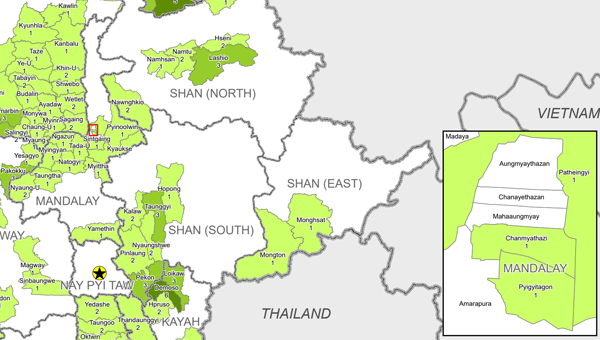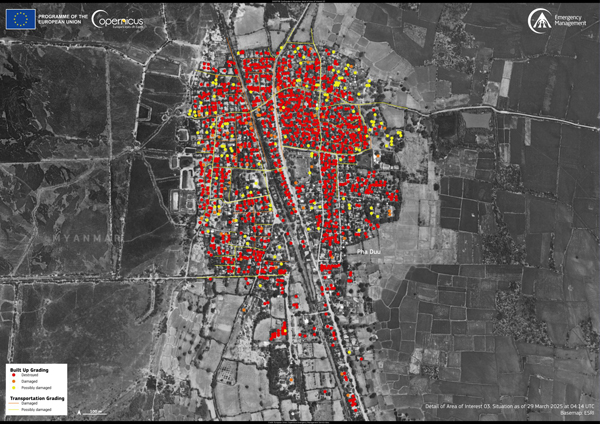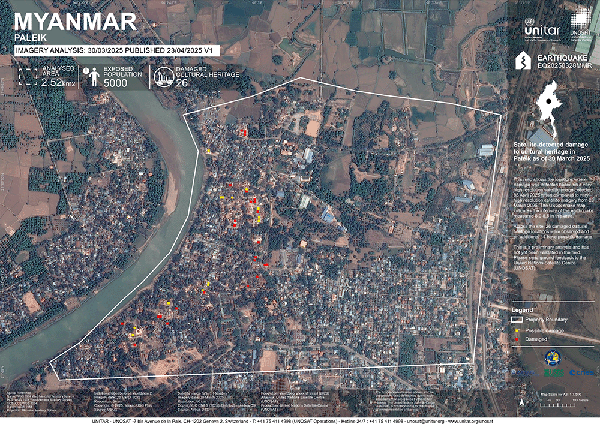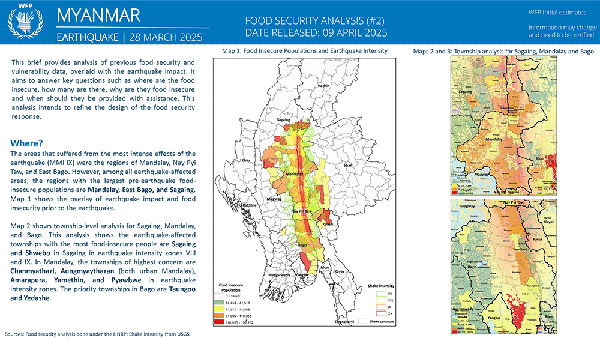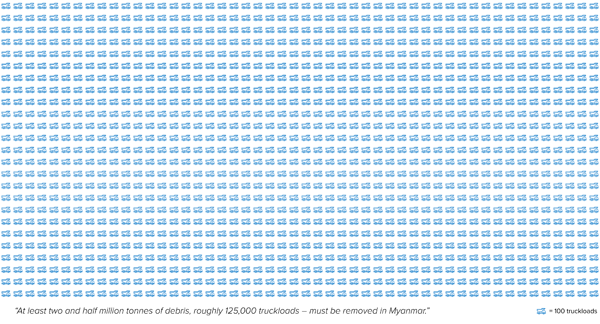Today marks one month since the devastating earthquake struck Myanmar on 28 March 2025. Affected communities still face severe challenges and urgently need essential supplies and services, while sustainable early-recovery support is critical to help them rebuild their lives and livelihoods.
Drawing on the latest reports from multiple agencies—while data collection and validation are still ongoing—below is a snapshot of the impact and response one month after the earthquake.
Sources: UNOCHA, UNDP, UNFPA, UNHCR, UNICEF, AHA Centre
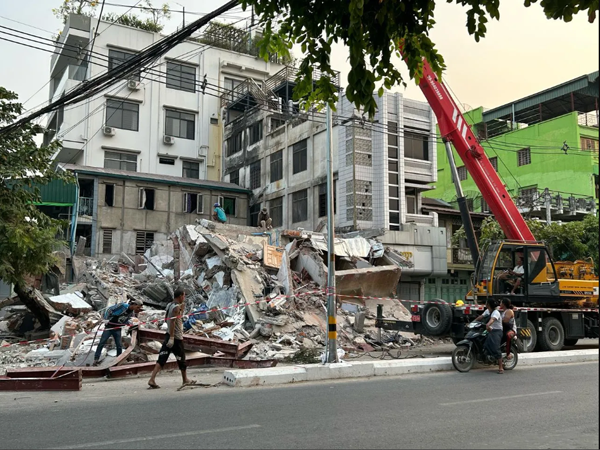
Photo : UNDP Myanmar
Human Impact
- 3,757 deaths, 5,107 injured, 116 missing (as of 22 Apr 2025, 18:00 MMT) – AHA Centre
- Over 9 million people (including 2.7 million children) living in the 58 worst-affected townships – UNICEF
- 17.2 million people in key affected areas, including 4.6 million women of reproductive age and 223,157 currently pregnant women – UNFPA
- 2.1 million conflict-affected IDPs also impacted by the earthquake – UNHCR
- 206,977 people currently displaced; 41,733 of them sheltering in 135 temporary sites – AHA Centre
Infrastructure Damage
- 55,587 houses damaged (12,441 totally; 43,146 partially)
- 38 railways, 95 bridges, 407 roads, and 198 locations / 81 bridges along the Yangon-Mandalay Expressway damaged
- 5,452 office buildings, 2,565 schools, 5,319 religious buildings, 5,342 pagodas, and 304 hospitals/clinics affected – AHA Centre
- 3.3 million tonnes of debris to be cleared – UNDP
- 640+ health facilities damaged – UNFPA
Highlighted Needs and Responses
- UNDP: Cash-for-work programmes for debris removal and infrastructure rehabilitation, generating immediate incomes for over 250,000 people. Temporary shelters provided, homes assessed and—where possible—repaired ahead of the rainy season, reaching nearly 50,000 households. Household Emergency Assistance Packages (HEAP) reached 500,000 people in urban and rural areas.
- Food Security Cluster: Over 413,000 people reached with food assistance in Mandalay, Nay Pyi Taw, Sagaing, and southern Shan.
- Health: 36 partners delivering essential services across 22 affected townships; 7,300+ people treated at mobile clinics.
- UNFPA: 18,367 People reached with essential SRH services,including life-saving maternal care and clean delivery kits, in severely affected regions of Mandalay and Sagaing
- Logistics: Storage capacity remains a critical need, particularly in Mandalay and Yangon.
- Nutrition: Nearly 500 children and 20 pregnant/lactating women screened for acute malnutrition.
- Protection:
- Needs assessments and monitoring covered ~80,000 people.
- 70,000+ people joined community-based awareness sessions on protection and human-rights risks.
- MHPSS support reached 325 people in Mandalay, Nay Pyi Taw, Sagaing, and Yangon.
- Child Protection & GBV:
- 17,159 people (incl. 14,146 children and 7 persons with disabilities) reached with child-protection services.
- UNFPA and around 49 partners are delivering MHPSS, legal aid, health services, counselling and referral services, dignity and essential item kits.
- UNFPA: 18,259 People reached with integrated GBV/MHPSS support, including capacity building and provision of dignity kits and Women Essential Items kits
- 3,000+ women and girls accessed GBV services; 10,000+ people attended GBV/MHPSS awareness sessions.
- 7,036 dignity kits and 5,200 women’s essential-item kits distributed.
- Shelter/NFI: Since the earthquakes, 116,800 people received emergency NFI assistance in 26 townships, and 13,400 received emergency-shelter support in 15 townships.
- WASH: Many communities still rely on unsafe water sources due to damaged boreholes, broken pipe systems, or contaminated wells. Cluster partners have:
- Reached 600,000+ people with water-purification tablets.
- Provided ~241,000 people with water distribution, sanitation facilities, hygiene kits, and hygiene-promotion activities.
- UNDP supplied clean drinking water to 500,000 people through purification kits, water kiosks, and well-cleaning—ensuring access for persons with disabilities.

